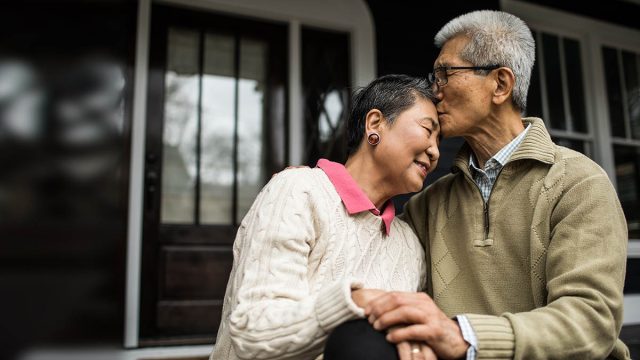Expanding diversity in clinical trials
Acknowledgments
This article is the third in a series aligned with PAN’s four-part Health Equity in Action webinar series, presented in partnership with CVS Specialty.
We once again thank Dr. Dara Richardson-Heron (she/her), physician, Fortune 100 leader, board director, patient advocate, transformative change agent and resident expert on clinical trials, for moderating all four webinars in the series. Her work serves as the inspiration and the foundation for this blog series. Dr. Dara set the stage by providing an overview of what clinical trials are, why they are important, and the role they play in our healthcare system. We are grateful for her pioneering ideas, emphasis on cultural humility, and sharing practical tools and tips on advancing health equity in everyday practice.
We also thank Kara Downey (she/her), Director of Program Development and Delivery with Cancer Support Community, Dr. Sabrina Mayhew (she/her), Nurse Navigator with Cancer Support Community, and Dr. Martin Mendoza, Director of Health Equity with the All of Us Research Program at the National Institutes of Health, for joining the third webinar in the series as guest expert panelists.
The importance of diversity among clinical trial participants
The current landscape of clinical trial participation
Every drug sold in the United States—from over-the-counter pain medication to prescription drugs—require U.S. Food and Drug Administration approval after completion of a clinical trial. These clinical trials aim to ensure the drug is safe and effective to use.
However, despite people from minoritized populations comprising about 41 percent of the U.S. population, according to the latest U.S. Census Bureau—and a figure expected to rise to 54 percent by 2050—these populations represent less than 10 percent of clinical trial participants. And this disparity is even more prevalent when we look closer at certain marginalized and underserved communities. For example, African Americans make up 13.6 percent of the U.S. population, while representing just 5 percent of clinical trial participants nationwide, according to the Association of American Medical Colleges.
Historically, researchers have not always recruited for diverse participation in clinical trials. And, even when they have, some marginalized communities have been harmed leading to a lack of trust in the clinical trial process. Two noteworthy historical transgressions, which eroded the public’s trust in clinical trials were the widespread use of Henrietta Lacks’ cancer cells without her knowledge in the 1950s, and the Tuskegee experiment conducted between 1932 and 1972.
And this mistrust is not unfounded. But in part due to these shameful and appalling events, the Federal government has put in place rigorous regulations and guidelines for clinical research to help protect patients from unreasonable risks. Most notably, informed consent is now a requirement for all clinical trial participants.
Understanding the importance of expanding diversity
As Dr. Dara mentioned during our webinar, “communities are not monoliths.” We need to ensure that we include a more representative sample of the population, encompassing a diverse set of backgrounds—including age, race, ethnicity, disability status, gender identity, and sexual orientation.
Continued lack of diversity among clinical trial participants could lead to several negative outcomes, including, but not limited to:
- Inability to generalize research findings to individuals from communities not included in clinical trials
- Continued health disparities that cost billions of dollars
- Decreased innovation and new discoveries
The role of healthcare professionals
So how can healthcare professionals help expand clinical trial diversity? One of the first steps is understanding the barriers that keep individuals from more diverse backgrounds from participating in clinical trials in the first place.
Some barriers shared during our webinar include a lack of awareness and education; strict eligibility criteria; logistical challenges, such as travel costs; fear of the unknown; stigma; and privacy concerns. Once we identify the barriers, we can offer solutions and resources to help mitigate them.
In addition, PAN’s own polling earlier this year found that while a majority of adults trust their doctor to provide information about clinical trials, nearly 80 percent had never discussed the option with their healthcare provider. Talking to patients, particularly those who come from historically marginalized and underserved populations, about clinical trials can be so valuable.
3 tips for expanding diversity in clinical trials
#1: Engage with patient advocacy groups, especially those who serve marginalized and underrepresented communities.
There are thousands of patient advocacy groups across the country who are on-the-ground doing the work alongside patients from historically marginalized and underrepresented communities. By listening to and engaging with these types of organizations, you can better understand the needs of their patient populations and equip them with the education and resources needed to increase awareness of clinical trial participation.
#2: Support community partnerships that can help reach patients from marginalized communities.
To reach patients from marginalized communities, it’s also important to support community partnerships that already exist within these communities and identify new partnerships that could help reach a key patient population. For example, are there local healthcare coalitions, places of worship, or employers you could partner with to bring clinical trial awareness and educational resources to people from diverse backgrounds.
#3: Leverage relationships with trusted individuals within marginalized communities.
When it comes to clinical trial participation, establishing trust is critical. That’s why you may need to go beyond traditional organizations to leverage people within communities who are seen as trusted influencers. This could be a local faith leader, a small business owner, a politician, a media personality, or the head of a community center. Building relationships with these individuals and equipping them with the resources they need to have conversations about clinical trial participation only helps to broaden awareness within marginalized communities.
Moving forward on the path to equity
We know that a lack of diversity in clinical trial participation, which goes beyond race and ethnicity, can exacerbate existing disparities in quality and delivery of healthcare. Ensuring that clinical trials reflect the diverse individuals who will be impacted by the treatments being studied is necessary for us to achieve health equity.
By engaging with patient advocacy groups, supporting community partnerships, and leveraging key influencers, we can increase awareness and make tangible progress towards expanding diversity in clinical trials.


